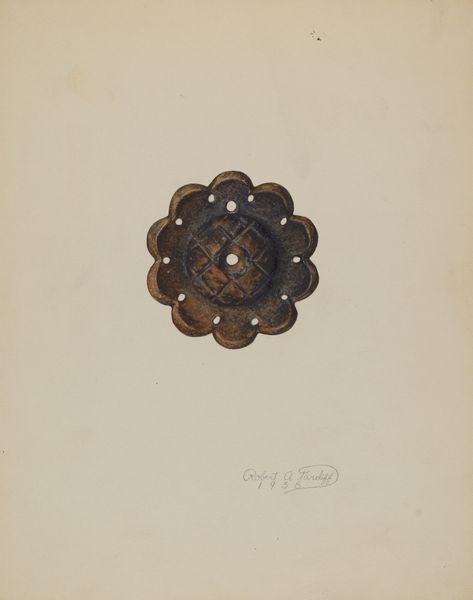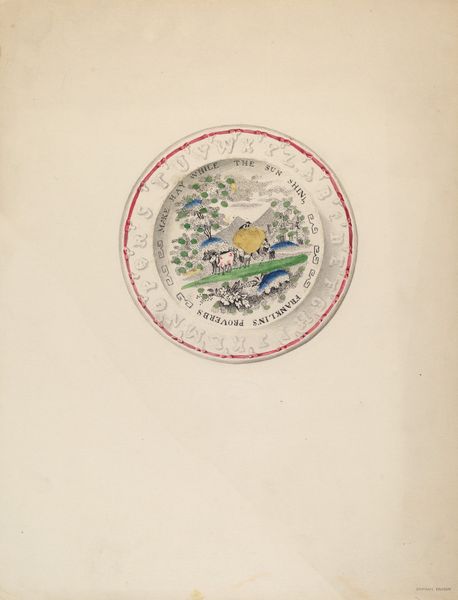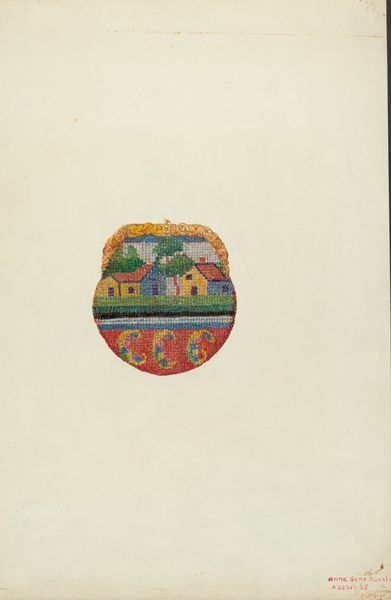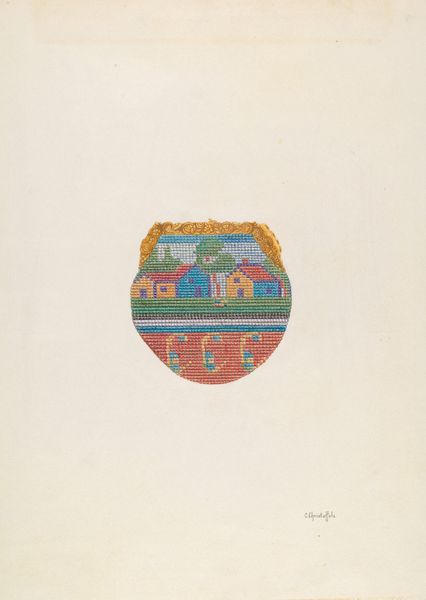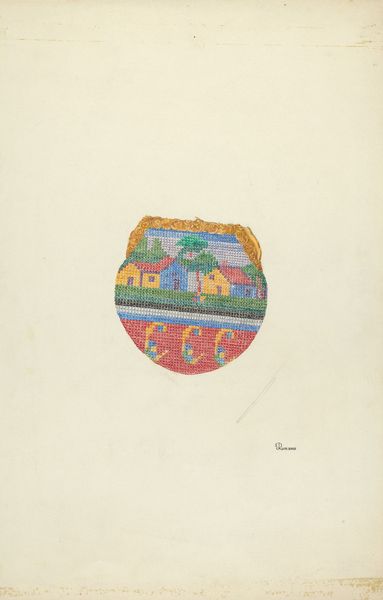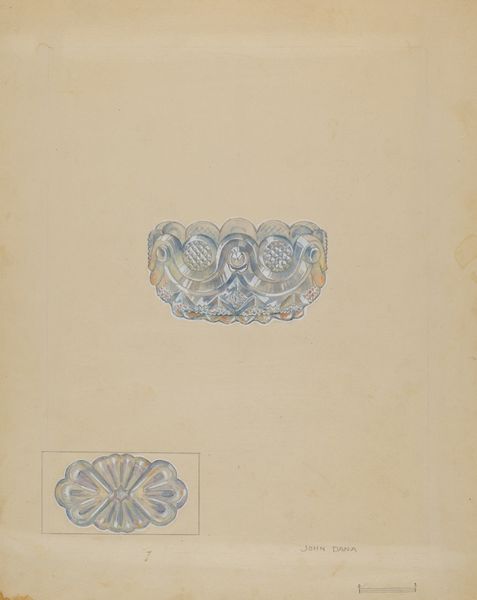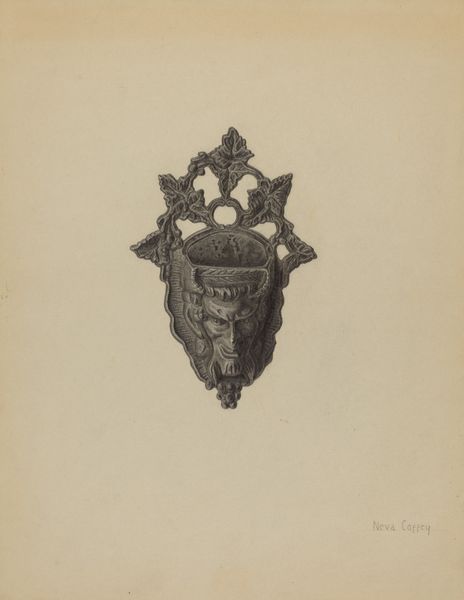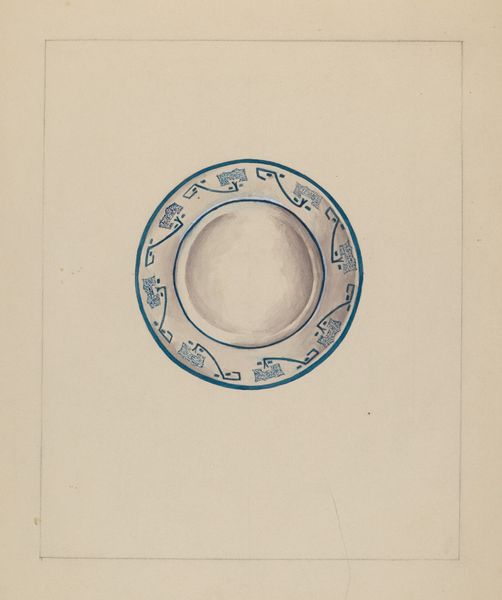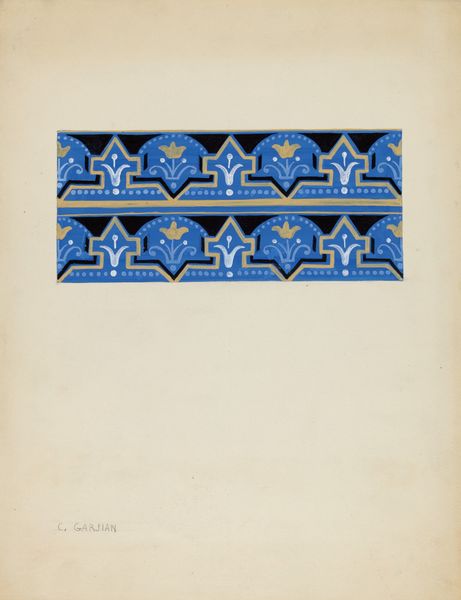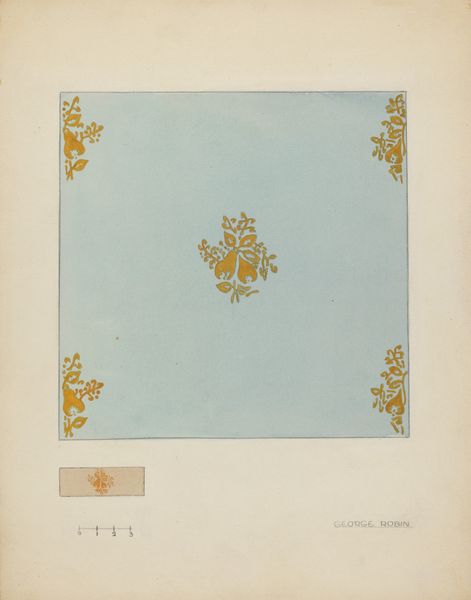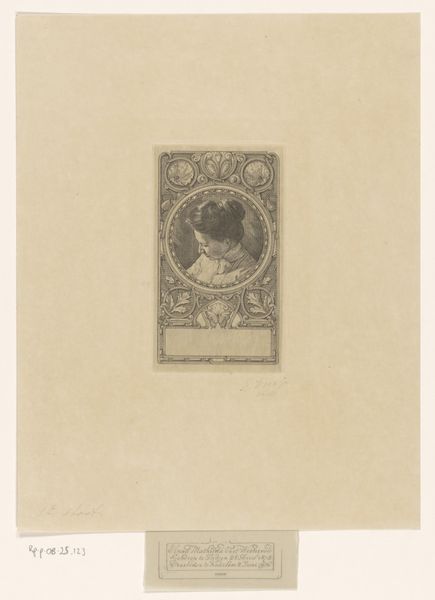
drawing, paper
#
drawing
#
paper
#
decorative-art
Dimensions: overall: 35 x 30.2 cm (13 3/4 x 11 7/8 in.)
Copyright: National Gallery of Art: CC0 1.0
Curator: Right now we're looking at a drawing titled "Paper Weight," created by Joseph Mitry around 1941. It's a striking piece done on paper. Editor: It has such a delicate feel, like a jewel suspended in space. There’s a fragility to the colors, despite the bold design, and the object seems almost to float off the paper. Curator: Mitry seems to be interested in the paperweight as a cultural object, distilling its design into recognizable motifs, almost archetypes of craftsmanship from that period. Each tiny component looks like it has symbolic heft. Editor: I find myself drawn to how he's represented glass; how do you convey the illusion of depth, clarity, and refracting light with dry materials on paper? The visible hand of the artist is clear, highlighting both its skillful crafting and Mitry’s artistic labor. Curator: Yes, the act of drawing and rendering this commonplace object becomes almost a ritualistic re-enactment. Glass itself represents purity and transparency. To capture that and constrain it, to literally 'weigh it down' on paper, hints at deeper meanings. What truths, held in stasis, does the paperweight symbolically reveal? Editor: Absolutely, I think examining how the glass, which embodies that promise of endless manipulation, became frozen in a domestic ornament reflects cultural values prevalent at that time. The label 'Pitkins, Conn.' places the paperweight geographically and within particular manufacturing systems. Were Pitkins well-regarded paperweight makers? This drawing may be documenting that heritage, freezing it in time. Curator: Indeed. This single object resonates with meanings – glassblowing traditions, personal histories embedded within the artwork itself. It also evokes that impulse for miniaturization of our world for contemplation in miniature, or perhaps even control over uncontrollable realities! Editor: The meticulous representation really lets one imagine the physical act of the worker carefully assembling a world inside this object and, consequently, what Mitry captures so carefully onto the paper. He turns this into a very poignant observation of artistic and industrial practice. Curator: It truly reveals how the everyday holds so many possibilities and reflects the convergence of technique and intention in art. Editor: Agreed, an item that becomes a lens for viewing both our culture and the nature of creation itself.
Comments
No comments
Be the first to comment and join the conversation on the ultimate creative platform.
